#wari
Text
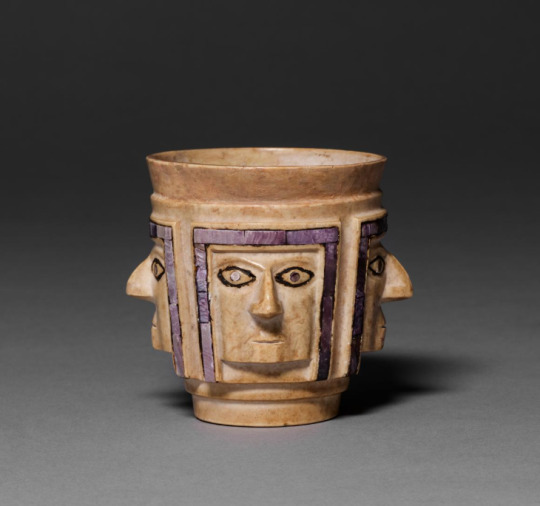
Shell inlaid stone cup, Wari people, Central Andes, 600-1000 AD
from The Cleveland Museum of Art
182 notes
·
View notes
Text
https://ictnews.org/news/endangered-river-gains-personhood-in-brazil

284 notes
·
View notes
Text
Archaeologists have discovered a 1200-year-old Wari ritual complex in southern Peru that would have been used for religious and public celebrations during the height of the Wari Empire.
485 notes
·
View notes
Text
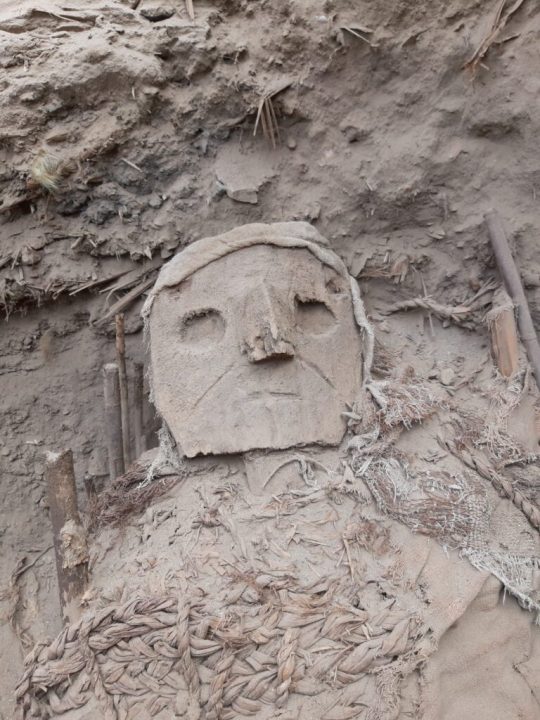

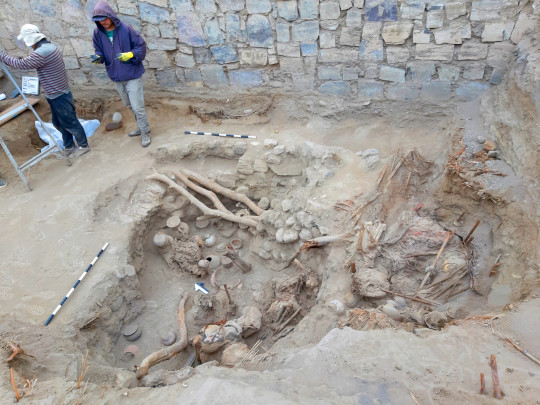

Archaeologists Find 73 Wari Mummy Bundles in Peru
A team of archaeologists from the PUCP Archaeology Program “Valley of Pachacámac” have uncovered over 70 intact burial bundles with carved masks.
The discovery was made at Pachacámac, an archaeological site in the Valley of the Lurín River, located southeast of Lima, Peru. Pachacámac (named after Pacha Kamaq – the “Earth Maker” creator god) was first settled around AD 200 by the Wari, a Middle Horizon civilisation.
Pachacámac mainly consists of pyramids, plazas, cemeteries, and a series of ramps, centred on a sacred zone containing the Painted Temple, the Temple of the Sun, and the Old Temple of Pachacamac.
Recent excavation results announced on the Archeowieści blog, which is managed by the Faculty of Archaeology of the University of Warsaw, have uncovered over 70 intact burial bundles dating from the second half of the Middle Horizon (AD 800–1100).
The burial bundles were found either deposited individually or in group clusters at the foot of the Painted Temple, some of which are wearing “false head” masks made of carved wood and ceramics, a common burial practice of the Wari culture.

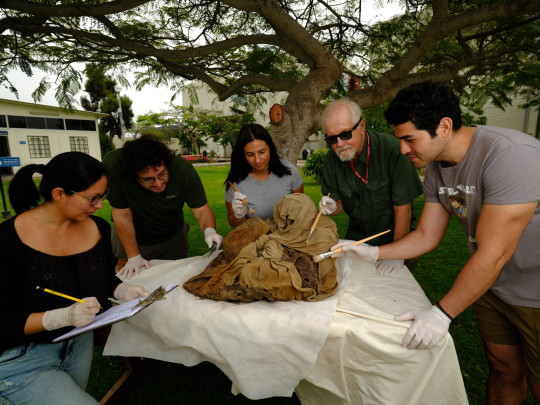
Professor Makowski, said: “In the pre-Hispanic Andes, no-one died; everyone was predestined to continue living in the parallel world of their ancestors.”
Excavations also discovered wooden staffs with images of Wari elite wearing Tiwanaku-type headgear. They were located in a votive deposit covered with a layer of oyster shell fragments imported from Ecuador.


The Wari worshipped the Staff god, the chief creator god, which is often found in both portable and fixed art using different media such as stone, textile, and ceramics. Some scholars believe that some variations of the Staff God are possible depictions of Viracocha or Thunupa, and are the forerunner of the Inca principal gods – the Sun, Moon, and Thunder.
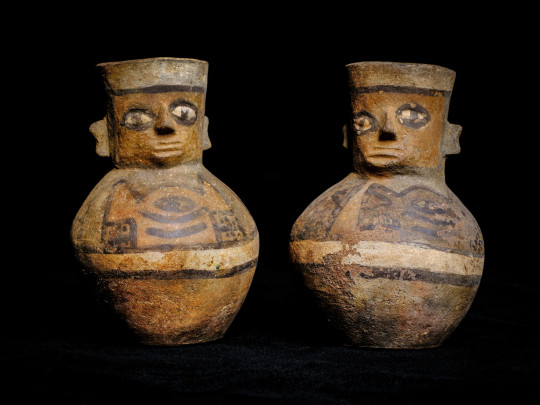

#Archaeologists Find 73 Wari Mummy Bundles in Peru#Pachacámac#ancient graves#ancient tombs#grave goods#ancient artifacts#archeology#archeolgst#history#history news#ancient history#ancient culture#ancient civilizations#wari
59 notes
·
View notes
Text
Average Video game character has hundreds of sprites factoid is actually a statistical error. Peppino Spaghetti, who has over 5,000 unique sprites, is an outlier adn should not have been counted.
54 notes
·
View notes
Text

Bottle in the shape of a feline
Wari
600–900 CE
Although it is possible that this bottle was never used and only destined to be deposited in a burial, it could have once contained liquid to be poured on the ground or ingested, perhaps maize- or red peppercorn- beer (Sayre et al. 2012). The vessel’s small size suggests that it was meant for personal devotional practice. As one held this bottle featuring multiple powerful beings in one’s hands, the viewing experience would have evolved, especially as the bottle was tilted upside-down to pour liquid from the bottle’s spout. Would this physical manipulation have prompted in the user sensations of fear and respect for these entities, or instead a sense of control over them?
source
16 notes
·
View notes
Text
Gold and silver treasures discovered with 'elite craftspeople' burials near powerful Wari queen's tomb

Archaeologists excavating a necropolis north of Lima have unearthed a 1,300-year-old ornate tomb from the Wari era of Peru. The tomb contains the remains of a high-status man dubbed the "Lord of Huarmey."
The remains of six other people were found in the same tomb, some of which were likely reinterred after first being buried elsewhere. The remains include four adults — possibly two males and two females — and three people who may be adolescents, according to the University of Warsaw's Faculty of Archaeology.
All the remains in the tomb were buried with gold and silver jewelry, bronze tools, knives, axes, baskets, woven textiles, raw materials for basketry, and wood and leather items — an abundance of objects that makes archaeologists think the people buried there were skilled craftspeople, as well as members of the Wari elite. Read more.
152 notes
·
View notes
Text





Paper Girls, Issues #21-25, covers.
Brian K. Vaughan (writer), Cliff Chiang (artist), Matt WIlson (colors), Jared K. Fletcher (letters).
Alt Ver. without title:





#paper girls#paper girls comic#image comics#brian k. vaughan#cliff chiang#matt wilson#jared k. fletcher#kj brandman#mac coyle#wari#my edit#paper girls cover#pgedit
13 notes
·
View notes
Text

22 notes
·
View notes
Text
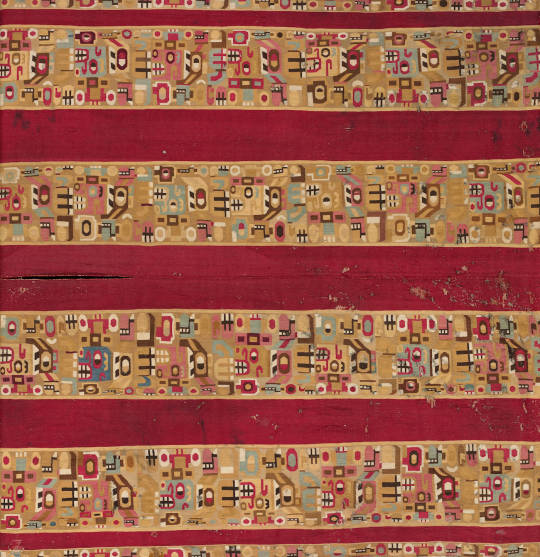

Textile. Central Andes, Middle Horizon, Wari people, 7th-11th century - Cleveland MA
23 notes
·
View notes
Text
The Wari civilization is known for their advanced agricultural practices and food preservation techniques, which allowed them to store and distribute food throughout their empire. One of their most impressive preservation techniques was a type of food freezing, which involved creating specialized structures known as qollqas.
Qollqas were massive, multi-story buildings constructed out of stone and clay. The Wari used them to store large quantities of food, including grains, potatoes, and other crops. The qollqas were designed to maintain a cool and dry environment, with thick walls that insulated the stored food from the outside temperature and humidity.
The Wari also took advantage of the high altitude of their empire to preserve food through freezing. Many of their qollqas were built at high elevations, where temperatures are naturally colder. The Wari would store food in the qollqas during the winter months when the outside temperature was even colder, which helped to freeze the food and keep it fresh.
Additionally, the Wari used a variety of other food preservation techniques, such as drying, salting, and smoking. They also had a complex system of roads and warehouses that allowed them to transport and distribute food throughout their empire. These advanced food preservation and distribution systems were essential to the success of the Wari civilization, which flourished in the Andes Mountains of South America from around 600 to 1100 CE.
#chat gpt#chat bot#wari#qollqas#Qullqa#colca#collca#qolca#qollca#engineering#ancient civilizations#america#south america#history#food storage#ancient#preservation systems#distribution systems#war civilization#andes mountains#andes
3 notes
·
View notes
Text
Estados militaristas andinos: Introducción
Incluso desde antes de su definición como una sociedad independiente de Tiwanaku, la arqueología relacionada con lo que se conoce como Wari (600 d.C-1000 d.C.) ha sido la base sobre la que se ha generado un importante debate especialmente con respecto a su naturaleza sociopolítica y socioeconómica. En este artículo, desde nuestra perspectiva arqueológica, queremos contribuir a darle sentido y…

View On WordPress
#Andes Centrales#archaeological indicators#Central andes#Empire#estado#imperio#Indicadores arqueológicos#prácticas sociales.#social practices.#State#Wari
2 notes
·
View notes
Text
Recent discoveries have revealed a vibrant #cultural tapestry – from a Wari settlement to sacred Inca oracle site. The intricate ceramics, textiles, and unique connection between Pachacámac and the Tiwanaku kingdom, paint a vivid picture of pre-Hispanic Andes.
#burials#mass graves#ceramics#shells#Peruvian#Andes#Wari#Inca#mummy#Pachacamac#ancient#history#ancient origins
12 notes
·
View notes
Photo

An intact tomb is shedding light on a mysterious civilization that ruled Peru
Around the seventh century A.D., the Wari emerged from obscurity in Peru, rising to glory long before the Inca. They became master engineers and founded a sprawling capital. But unlike other imperial powers they had no system of writing, and many of their sites had been looted over the centuries. The discovery of a rare royal tomb is filling in many of the blanks.
Photographer: FERNANDO G. BAPTISTA, NATIONAL GEOGRAPHIC CREATIVE
#fernando g baptista#national geographic#photographer#tomb#peru#wari#inca#royal tomb#history#culture#travel
3 notes
·
View notes
Text
spoon
159 notes
·
View notes
Text

Face Neck Jar
Wari
650-1000
Wari vessels such as this elaborately decorated jar were used to serve and drink chicha (a fermented corn beverage) during feasting celebrations. The main figure represented on the body of the jar is a male of high status, as indicated by the designs on his tunic and the condor and feline motifs on his face, both of which are associated with spiritual power. The ear of corn dangling from his headdress and another adorning the top of one of his staffs attest to the importance of that crop.
source
2 notes
·
View notes